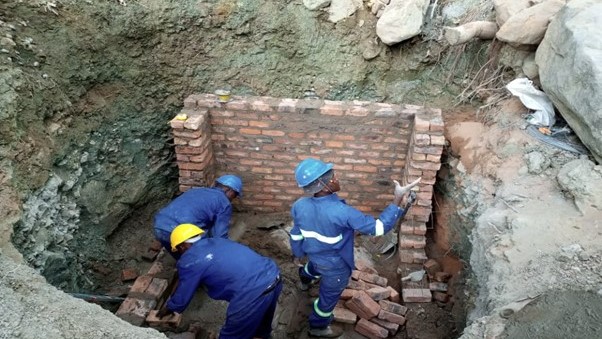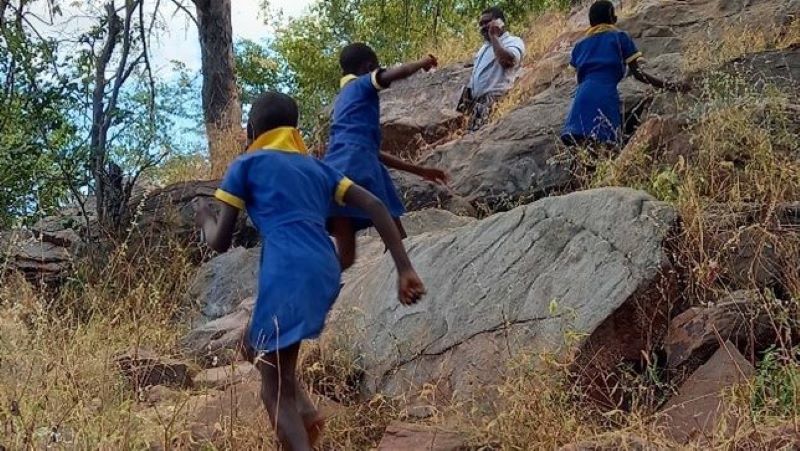Water project transforms school and surrounding community

Neil Roper, our Events Coordinator, shares the story of a project which has provided reliable and accessible “clean” and “safe” water for Junamina Primary school as well as villagers in Minsale and Siafugama, Zimbabwe.
The nearest water source to the school was 1.4 kilometres away and some villagers used to walk more than 2km in the dry season to fetch water. In the past, the government and other development agencies attempted drilling boreholes and sinking deep wells for the marginalised rural communities. These efforts were unsuccessful because of a low water table in the area resulting in dry holes at the school and in the villages.
For schoolchildren and the surrounding villagers, climbing up and down a rocky and steep canyon to access the spring water as well as walking long distances is now a thing of the past after CARITAS Hwange and CAFOD with support from UNICEF and the community implemented the Kadomwa project. The project is now piping water to well over 1,000 people.
When the local organisers together with a team of CARITAS Hwange staff visited the school and the villagers, the villagers expressed their gratitude, describing the impressive project as a relief to school children and the villagers.

One Teacher, Mr Mukini said that: “We are so elated that finally we are having water from taps and at our School. We are no longer walking long distances with buckets on our heads. I never thought this would happen in my lifetime, but it has finally happened.”
A villager, Gogo Mumpandew, also said that: “Water issues usually affect us the women most because it is us who do daily chores that require water such as cooking, washing, and gardening, among others, so this is a shot in the arm for women in this village. We are so happy with this project and CARITAS for remembering us.”
To make the project sustainable, training has been given to the local community on the operation of the whole system. Water testing services will be provided by the government, which will ensure that children and the community in general will have access to safe drinking water. The communities have agreed to make monetary contributions each month to ensure the sustainability of the project.
In a meeting with the local leaders, the Siansundu ward councillor said the Kadomwa Piped Water Scheme had changed the face of the school and urged the school authorities together with the SDC to utilise the water to turn around their economic fortunes: “Apart from water sanitation and hygiene, the water can be used for nutrition gardening, orchard, fish farming, and beautifying the school with flowers and lawn.”
The water project has allowed children and staff to return to school as they no longer have to collect water. The Head Teacher is also considering expanding the enrolment.
The project has improved handwashing at the school, and it is now possible to clean the latrines properly. This has contributed to a fall in water borne diseases.
In the summer where temperatures rise to 38C+ in the district, schoolchildren could also suffer from dehydration during the athletics and ball game activities due to limited access to drinking water. The provision of reliable water at the school will positively reduce cases of dehydration.
Many of us got involved in the ‘Walk for Water’ last year. This project is a great example of the support we were walking and raising money to provide. Thank you for all your efforts.